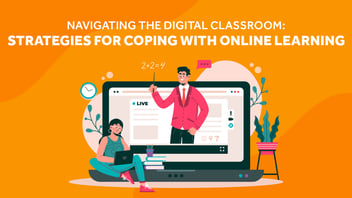The Benefits of Blended Learning in K-12 Education
Hey there, knowledge seekers! Today, we're diving headfirst into the world of K-12 education and exploring a game-changer in the realm of teaching and learning - blended learning. Have you ever wondered how technology could revolutionize our classrooms? Well, get ready to be amazed as we unveil the benefits of blending traditional teaching methods with the power of technology. Let's get started!
Blended Learning Defined:
First things first, let's unravel the mystery of blended learning. In simple terms, it's like a delicious fusion dish combining the best of both worlds - traditional face-to-face instruction and online learning. Picture a classroom where students not only interact with teachers and peers but also have access to an array of digital resources. It's like adding a sprinkle of technological magic to the traditional chalkboard!

The Benefits of Blending:
1. Personalized Learning:
One size does not fit all, especially when it comes to education. Blended learning allows teachers to cater to individual student needs by providing personalized learning experiences. With the help of online tools, students can work at their own pace, accessing additional resources or revisiting concepts that require reinforcement. It's a win-win situation for both fast and slow learners!
2. Flexible and Accessible:
Gone are the days of being confined to a rigid classroom schedule. Blended learning provides the flexibility to access content from anywhere and at any time. Whether you're a night owl or an early bird, learning becomes an "anytime" pursuit. Moreover, it breaks down geographical barriers, making education accessible to students in remote areas or those facing mobility challenges.
.jpg?width=566&height=328&name=child-wearing-headphones-attending-virtual-school%20(1).jpg)
3. Engaging and Interactive:
Let's face it; textbooks can sometimes feel a bit dull. Blended learning spices things up by incorporating various multimedia elements such as videos, simulations, and interactive exercises. Learning becomes an immersive experience, capturing students' attention and enhancing their understanding of complex topics. Who said education can't be fun?


4. Stronger Collaboration:
Blended learning fosters collaboration among students and teachers. Online platforms encourage interactive discussions, allowing students to share ideas, ask questions, and learn from their peers. Additionally, digital communication tools make it easier for teachers to provide timely feedback and guidance, nurturing a vibrant and supportive learning community.
Conclusion:
As we wrap up our exploration of blended learning in K-12 education, it's clear that this innovative approach brings numerous benefits to the table. From personalized learning experiences to flexible schedules, engaging multimedia content to enhanced collaboration, blended learning is a game-changer in the world of education.
While it may not be essential for every classroom, the advantages it offers are indeed intriguing. As technology continues to evolve, so too will the possibilities for blended learning. So, whether you're a student, teacher, or simply an education enthusiast, keep an eye out for this exciting trend that is reshaping the way we learn and teach.
Check out our website for more learning materials and enjoy 20% discount for your first purchase!


.jpg?width=352&name=Featured%20Image%203%20copy%20(2).jpg)
